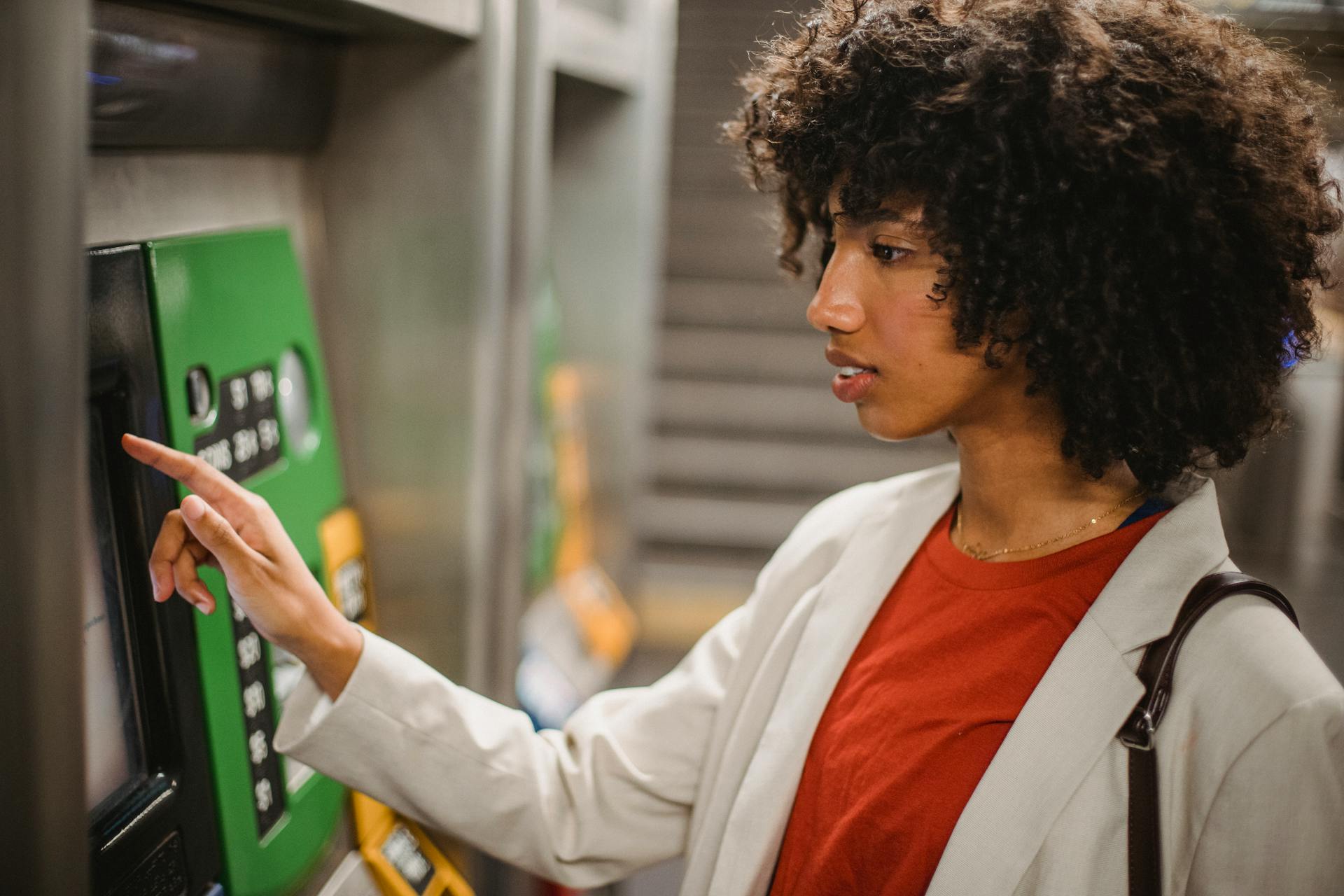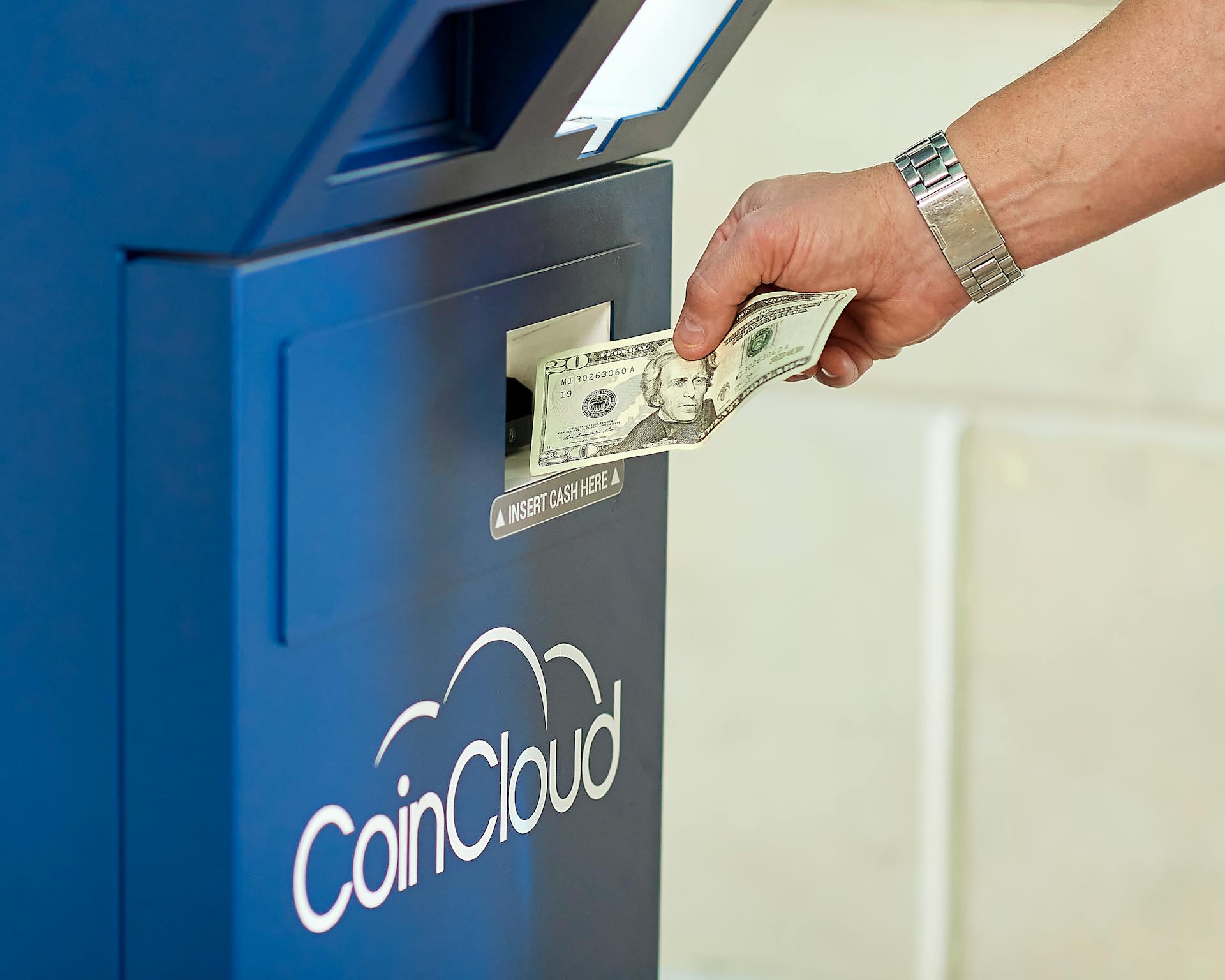
As an independent ATM deployer, you'll need to navigate the complex world of ATM deployment, which involves installing and maintaining ATMs in various locations. This can be a lucrative business, but it requires careful planning and execution.
Independent ATM deployers typically work with multiple banks and financial institutions to deploy ATMs in high-traffic areas such as shopping malls, convenience stores, and gas stations. They are responsible for ensuring that the ATMs are properly installed, maintained, and upgraded to meet the needs of their clients.
To succeed as an independent ATM deployer, you'll need to have a good understanding of the ATM industry and its regulations. This includes knowledge of the Payment Card Industry Data Security Standard (PCI-DSS) and the requirements for ATM installation and maintenance.
On a similar theme: ATM Industry Association
What You Need to Know
An Independent ATM Deployer, or IAD, is an individual or company that owns and operates ATMs without being affiliated with any specific financial institution. They can be found in various locations such as retail stores, gas stations, salons, and other public places.
Independent ATMs offer cash withdrawal and sometimes additional services like balance inquiries and transfers, just like bank-owned ATMs. IADs work with an independent sales organization (ISO) that provides processing to facilitate communication with users' financial institutions.
An IAD's main job is to purchase ATM equipment, place it in a convenient location, and maintain the machine to keep it functional. This ensures that customers have access to their accounts and can use the ATM safely.
Starting a Business
Starting a business as an independent ATM deployer is relatively low-cost, with the biggest expenses being the purchase of the machine itself and the cash to vault it.
You'll need to prepare some documentation to prove your identity, pass a background check, and complete any agreement forms required by your ATM processing company.
The process of getting a bank account for your ATM business can be tricky due to the cash-heavy nature of the business, but starting with a bank you already have a good relationship with can increase your chances of approval.
To make yourself a more appealing customer, offer to open multiple accounts with the bank, as this can make you a more lucrative customer and less likely to have your account closed.
You don't need any official education, training, certification, or experience to get started in the ATM business, and once you get past the initial steps, you can start making money immediately with little to no marketing efforts.
The biggest advantage of becoming an independent ATM deployer is being your own boss, allowing you to make decisions based on your specific situation, needs, and goals.
You can outsource any aspects of the business you can't or don't want to handle, such as vaulting or cleaning or maintenance, giving you curated responsibilities.
The ATM business is scalable, allowing you to generate passive income by placing multiple machines in various locations.
For another approach, see: T Mobile Carrier Billing
Operations and Management
As an independent ATM deployer, you have the freedom to outsource any aspects of the business you can't or don't want to handle, such as vaulting, cleaning, or maintenance.
You can hire someone to take care of these tasks, freeing up your time to focus on other areas of the business. Your ATM machine works with very little onsite effort from you, allowing you to generate passive income with minimal hands-on involvement.
You can load the machine, perform regular cleaning and maintenance, and then let the machine do the rest, earning you a steady stream of revenue with minimal effort.
Equipment
You'll want to start with a new ATM machine, as they are user-friendly, compliant, and typically experience fewer technical problems. New machines can cost anywhere from $2,000 to $3,000, depending on the size and manufacturer.
You can find used and refurbished machines for a little less, but they also come with a modicum of risk. It's essential to ensure that all faulty parts have been replaced or repaired, software has been updated, and that it's compliant.
At a minimum, you'll need to purchase a machine, which can be the biggest expense in starting an ATM business. The biggest expenses will be the purchase of the machine itself and the cash you use to vault the machine.
Plan to start with about $2,000 in vault cash, which is the cash you load into the machine to be dispensed to your ATM users.
Readers also liked: Bank of Spain Vault
Finding a Location
Start by looking for businesses you frequent and know some of the employees, as they can be a good source of referrals.
Look for gaps in service where there isn't an ATM machine, and find out who owns the location or property to see if they'd be open to a free ATM placement.
Statistically, the more people who pass by your machine, the more transactions you're likely to see, so consider places with high foot traffic like shopping centers or event areas.
Cash-only locations and new businesses that haven't been approached yet for ATM service are also great spots to consider.
Even if a location already has a machine, it doesn't hurt to ask if they're happy with it, and you could end up replacing someone else's machine that's been neglected.
You don't have to limit your search to locations without an ATM machine, you can look for machines that are old, unkempt, or frequently out of order, which could be a great opportunity to offer a better service.
As an independent ATM deployer, you're offering a service for free that benefits the location and its customers, so remember to instill confidence in your negotiation skills.
You might like: Free Cash App Atm near Me No Fees
Operations and Management
You'll need to invest around $2,000-$3,000 for a good ATM machine, but some credit companies offer little to no interest for 12-18 months, giving you time to get your business up and running.
To find and negotiate locations, don't limit your search to places without an ATM machine. You can also look for machines that are old, unkempt, or frequently out of order.
As an Independent ATM Deployer (IAD), you're offering a service for free that benefits the location and its customers. This can instill confidence in new IADs and help you negotiate a placement.
You might encounter objections when approaching location owners, but with preparation, practice, and active listening skills, you can become better at addressing these.
Imposter syndrome can be a challenge, but you can spin this in your favor by emphasizing your dedication to just one machine and your motivation to provide service that's good enough for a referral or recommendation in the future.
To mitigate risks, make sure to protect yourself with contracts, and there are templates you can use and industry experts you can borrow from without having to get a lawyer involved.
As long as your ATM machine is up and running, it will make money if someone uses it, but you might need to relocate the machine or adjust your signage, advertising, surcharge rate, and/or incentives to bring in enough income quickly enough.
Optimizing Uptime and Costs
Maintaining uptime is crucial for ATM deployers, as downtime can lead to lost transactions and revenue. Downtime can be caused by factors such as location internet service outages.
Having a reliable internet connection is essential to avoid relying on the location's internet service. Investing in your own internet connection from the start can save you from being at the mercy of the location's service provider.
Traveling to and from the machine is another cost associated with operating an ATM business. This can be minimized by having a comprehensive managed network service, such as TNSLink, which can simplify operational support and streamline vendor relationships.
Consider reading: Online Sbi Internet Banking Kit
Reducing network costs and increasing connectivity uptime are key benefits of using a managed network service. This can help IADs maintain maximum uptime while keeping costs in check.
As an IAD, you can outsource any aspects of the business you can’t or don’t want to handle, including maintenance and cleaning. This can help minimize costs and maximize uptime.
Investing in a wireless device is another cost associated with operating an ATM business. This is a necessary expense to ensure that your machine can connect to the internet and process transactions.
Frequently Asked Questions
How do privately owned ATMs work?
Privately owned ATMs require regular cash loading, which is typically done by the owner or a third-party service, and the cash is reimbursed daily through a designated bank account. This process allows owners to manage their ATM's cash supply and earn revenue from transaction fees.
Sources
- https://atmdepot.com/articles/independent-atm-deployer-faqs/
- https://www.wipfli.com/insights/articles/fi-reduce-risks-posed-by-independent-atm-operators
- https://www.cashflows.com/blog/setting-up-as-an-iad-what-you-need-to-know
- https://tnsi.com/resource/pay/tnslink-connectivity-that-means-business-for-independent-atm-deployers-blog/
- https://www.vixio.com/insights/pc-independent-atms-rising-cash-prejudice-challenge-us
Featured Images: pexels.com

